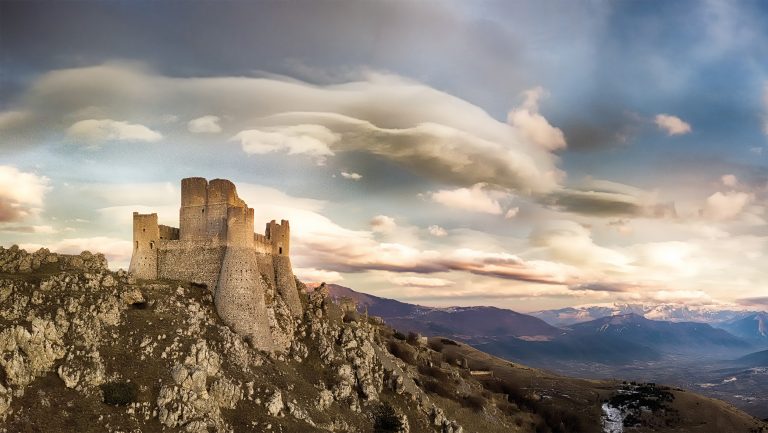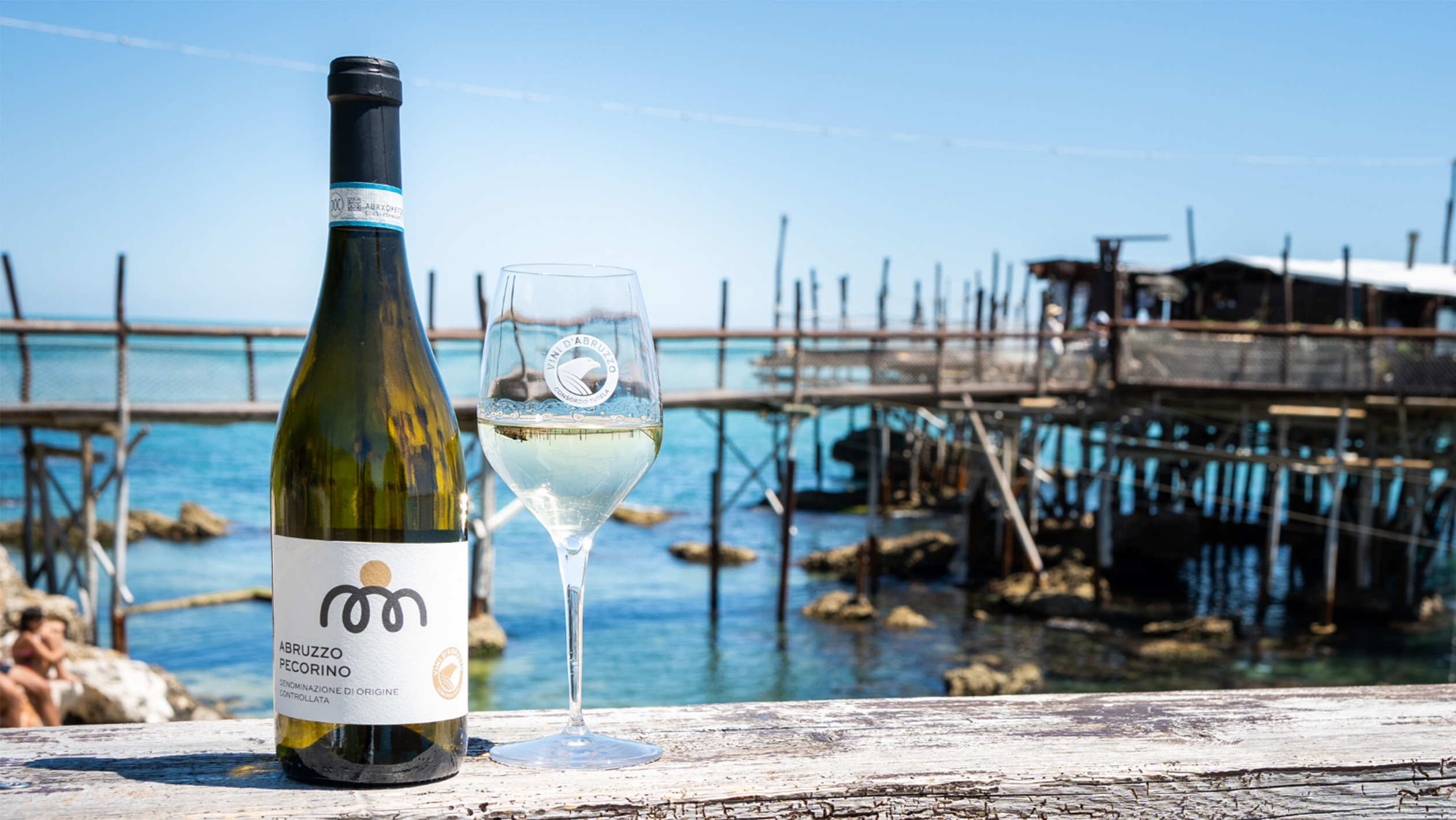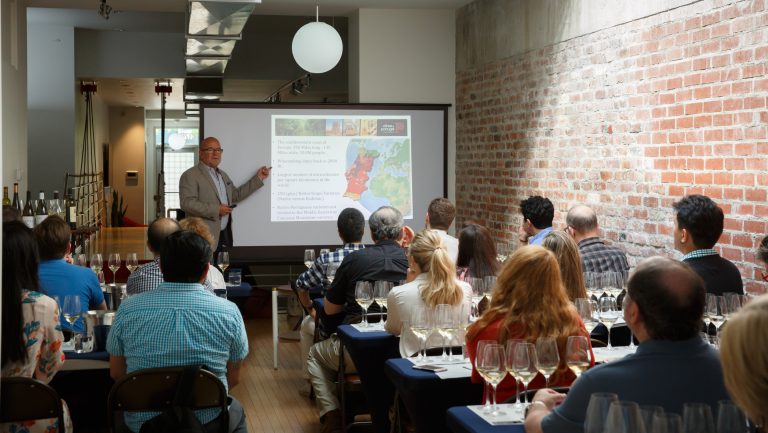This advertising content was produced in collaboration with our partner, The Charming Taste of Europe.
Tucked along the eastern coast of Italy, Abruzzo is one of Europe’s greatest gems, home to breathtaking landscapes, delicious regional cuisine, and of course, characterful and stunning wines. Though Italy as a whole has long been known around the world for its winemaking prowess, it’s only in recent years that Abruzzo has captured the hearts of U.S. consumers, making it an exceptional discovery for many.
But Abruzzo is just one example of the treasures that Europe has to offer. This continent is home to a wealth of timeless places, each of which creates food and beverage products with distinct flavors that translate the culture and heritage of their respective regions. That’s why the wines of Abruzzo are connected with the flavors of wine from France and fresh fruit from Greece under the Charming Taste of Europe project.
Explore the flavors of Abruzzo’s unforgettable wines, and discover how the particularities of this special European region—and the quality standards guaranteed by its DOCs—appear so clearly in the glass.

Don’t miss the latest drinks industry news and insights. Sign up for our award-winning newsletters and get insider intel, resources, and trends delivered to your inbox every week.
Evolution With an Eye Toward Tradition
U.S. consumers have recently become more enthralled with Italy’s smaller, lesser-known regions, and Abruzzo is certainly one of them. But as one of the oldest winemaking regions in the world, Abruzzo is no stranger to growing and producing wine. Its wine quality was first mentioned by Polybius, a Greek historian who lived in the second century BC, and later by Roman authors Ovid and Pliny the Elder.
That strong winemaking tradition has carried on in Abruzzo throughout the centuries, becoming imbued in the region’s very culture. For much of that history, winemaking has been centered in the Peligna Valley, an inland, mountainous part of central Abruzzo. Over the last 50 years, however, viticulture has begun to evolve and spread across the region, and the region is now gaining recognition for its intense, vibrant, and full-bodied wines.
Abruzzo is a natural haven for grape growing, with over 32,000 hectares of vines planted across the region. Bright, sunny days, a large diurnal shift, and moderating influences from the Apennine Mountains to the north and the Adriatic Sea to the east make it the perfect place for grapes to thrive.
Generally, Abruzzo’s landscape is divided into two areas. The inland, mountainous land is home to a continental climate, making up more than 65 percent of the region, while the coastal area has a strip of hilly land and a milder climate. Much of Abruzzo’s vines are found in this hilly, coastal area today.
Exploring the Wines of Abruzzo
The wines of Abruzzo evoke a feeling of grandeur and elegance, not in small part due to the superstar grape of the region: Montepulciano.
Not to be confused with Vino Nobile di Montepulciano (a Sangiovese-based wine from Tuscany), the Montepulciano grape is indigenous to Abruzzo, and is an embodiment of the region itself. In fact, about 70 percent of new vineyards have been planted to Montepulciano. Known for creating appealingly rustic, solidly built wines with supple texture and pronounced fruit, Montepulciano has become the gateway grape for many U.S. consumers to get to know Abruzzo, particularly in its key DOC: Montepulciano d’Abruzzo.
The Montepulciano d’Abruzzo DOC was established in 1968 and is now home to some of the highest regarded Italian red wines in the world. The heavy hitter of Abruzzo, it is responsible for over 80 percent of the region’s DOC production. These grapes are sourced from some of the region’s best vineyards—hilly or elevated terrain, which creates balance in the wines while promoting ripeness.
Montepulciano d’Abruzzo wines must be composed of at least 85 percent Montepulciano and are typically deep ruby in color, with fragrances of violet, red fruit, dry spice, and liquorice. While all bottles produced here are flavorful, the riservas are aged for a minimum of two years, with nine months in oak, offering soft tannic structure within a full bodied red. It’s an ideal accompaniment to lamb, cured meats, and pastas with red sauce.
Along with Montepulciano, Abruzzo is home to a handful of white grapes that are often blended to make juicy, bright wines under the Abruzzo DOC. The DOC itself was created in 2010 to protect and enhance the native grapes of the region, specifically those that were not identified within other DOCs. Passerina, Cococciola, Montonico, and Pecorino reign supreme within the Abruzzo DOC. Pecorino (named after the shepherds that would snack on the grape—the Italian word for sheep is pecora) is the most-planted of the bunch, making powerful white wines with bright acidity, a balance that works well with the many fish dishes famous in the region.
Trebbiano d’Abruzzo DOC also specializes in excellent white wines, starring the Trebbiano d’Abruzzo grape from which it gets its name. Much like Montepulciano, it has historically been confused with another grape in Italy (Trebbiano Toscana), but this one is all its own. Ripening slightly earlier than its Tuscan counterpart, Trebbiano d’Abruzzo creates a bold, versatile wine (though it should be noted that Trebbiano Toscana is permitted in the Trebbiano d’Abruzzo DOC). Bottled either young or after maturation in oak barrels, the wines of this region are known for their straw yellow appearance, and incredible flowery and fruity aromas. Always dry and well-balanced, Trebbiano d’Abruzzo is made for full-flavored, savory dishes—think antipasti and any cream-based pasta.
Located in the mountainous province of L’Aquila, Cerasuolo d’Abruzzo DOC, founded in 2010, was the first designation in Italy dedicated exclusively to rosé wine. Cerasuolo (meaning “cherry red” in Italian) is made from Montepulciano grapes with a very short period of skin contact—as little as a few hours for some—resulting in a bright red wine, served best young and chilled.
This method has been used since ancient times in the region, but Abruzzo’s recent technical evolution has resulted in higher-quality wines, though they remain tied to the traditional methods of the area. Expect pleasant, intense fruity aromas, with a dry, gentle palate, and almond-like hints on the finish.
Villamagna DOC, founded during the 2011 harvest, is home to the newest Montepulciano distinction. Made with a minimum of 95 percent Montepulciano, the dry, harmonious reds of Villamagna are making a name for themselves on the world stage. Offering a reserve label which promises bold and smooth wines in the future, it is inevitable that we will continue to see this DOC gain greater recognition with each incredible vintage.
No longer an overlooked secret of distinctive European flavor, the wines of Abruzzo have become favorites among U.S. trade and consumers alike. From bold and recognizable Montepulciano d’Abruzzo to fresh and nuanced Trebbiano d’Abruzzo, each of the region’s wines transmit unmistakable quality and character—a result of the particular land, culture, and tradition from which they come.
The Charming Taste of Europe is a special project that links the flavors of wine from Italy and France and fresh fruit (kiwis and cherries) from Greece. The Charming Taste of Europe campaign is co-funded by the European Union and aims to promote the merits of European agricultural products, such as quality, tradition, traceability, safety, and high production standards. Quality is one of the greatest assets of the producers across the EU in their attempt to meet consumer demand and increase competitiveness of EU products in the U.S. and Canada markets.

Dispatch
Sign up for our award-winning newsletter
Don’t miss the latest drinks industry news and insights—delivered to your inbox every week.










